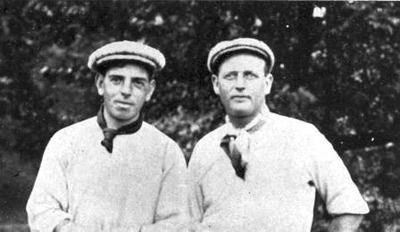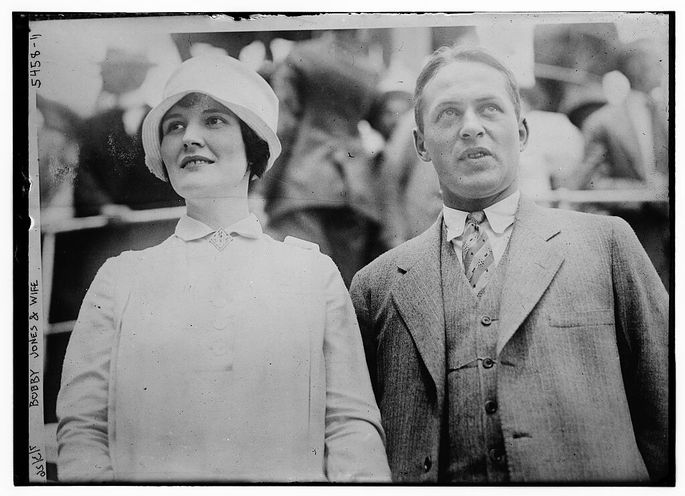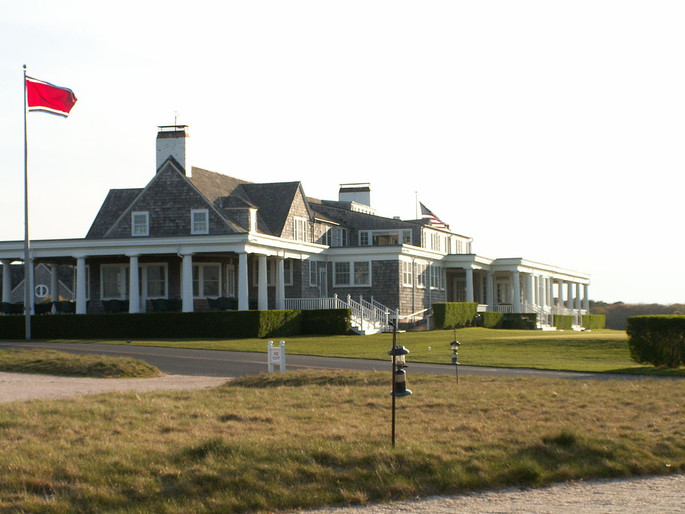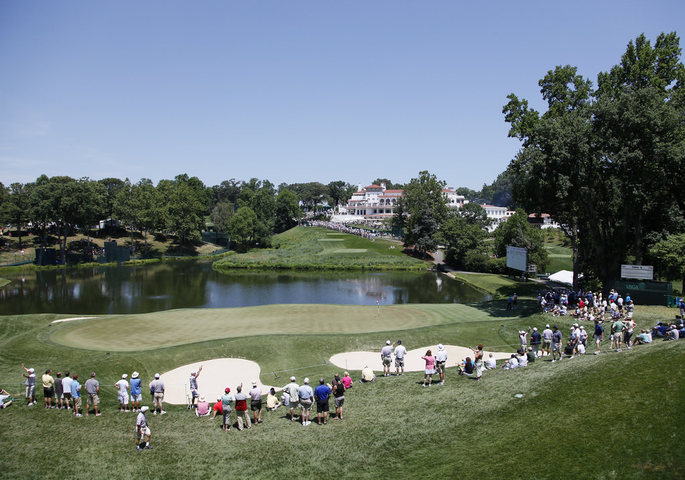Fast Facts
- When: 13th to 16th June 2024
- Where: Pinehurst Resort, North Carolina, USA
- Watch: Sky Sports Golf & Main Event
- Official Website: US Open
The US open is widely regarded as one of the biggest golfing events of the year. As one of the ‘four majors’, it’s a tournament that allows its entrants the chance to go down in history and become an illusive ‘major champion’.
American players have traditionally dominated, winning the last six renewals. There has however been recent European success with Graeme McDowell, Rory McIlroy, Justin Rose, Martin Kaymer, Jon Rahm and Matt Fitzpatrick amongst the recent champions.
Which side of the pond will the famous trophy sit after the 124th renewal?
Existing Customer Free Bets & Money Back Offers
Note: Offers will appear here nearer the event as and when they become available.
Stats Articles
- How Often is there a Hole-in-One on the PGA Tour?
- The Longest & Shortest Courses on the PGA Tour
- The Players Who Have Won the Most Majors in Golf - Can Jack Nicklaus' Record Ever be Beaten?
- Who Has the Longest Drive on the PGA Tour?
- Which Country Has Won the Most Majors in Golf?
- How Often Does The Favourite Win One Of Golf’s Majors?
- How Often Does the Third Round Leader Win a Golf Major?
- How Often Do The First Round Leaders Win a Golf Major?
- Golf Grand Slam Winners: Who Has Won All Four Majors?
Event Stats
US Open Round Leaders – 2014 to 2023
| Year | Round 1 | Round 2 | Round 3 | Winner |
|---|---|---|---|---|
| 2023 | Rickie Fowler Xander Schauffele |
Rickie Fowler | Wyndham Clark Rickie Fowler |
Wyndham Clark |
| 2022 | Adam Hadwin | Joel Dahmen Collin Morikawa |
Matt Fitzpatrick Will Zalatoris |
Matt Fitzpatrick |
| 2021 | Russell Henley Louis Oosthuizen |
Russell Henley Richard Bland |
Russell Henley Louis Oosthuizen Mackenzie Hughes |
Jon Rahm |
| 2020 | Justin Thomas | Patrick Reed | Matthew Wolff | Bryson DeChambeau |
| 2019 | Justin Rose | Gary Woodland | Gary Woodland | Gary Woodand |
| 2018 | Russell Henley Dustin Johnson Scott Piercy Ian Poulter |
Dustin Johnson | Dustin Johnson Brooks Koepka Daniel Berger Tony Finau |
Brooks Koepka |
| 2017 | Rickie Fowler | Brooks Koepka Brian Harman Paul Casey Tommy Feetwood |
Brian Harman | Brooks Koepka |
| 2016 | Andrew Landry | Andrew Landry | Andrew Landry Dustin Johnson |
Dustin Johnson |
| 2015 | Dustin Johnson Henrik Stenson |
Jordan Spieth Patrick Reed |
Jordan Spieth Dustin Johnson Jason Day Branden Grace |
Jordan Spieth |
| 2014 | Martin Kaymer | Martin Kaymer | Martin Kaymer | Martin Kaymer |
Schedule
- Practise – Monday 10th to Wednesday 12th June 2024
- 1st Round – Thursday 13th June 2024
- 2nd Round – Friday 14th June 2024
- 3rd Round – Saturday 15th June 2024
- 4th Round – Sunday 16th June 2024
About The US Open

The US Open takes place at different venue each year. The location is chosen by an executive committee from the United States Golf Association (USGA) and is moved between venues for each tournament.
The US Open is not only one of the most prestigious golfing events in the world but it’s also one of the oldest, with the first tournament taking place back in 1895 at Newport Country Club in the US state of Rhode Island. Back then the course only had nine holes so competitors played it four times in one day for a total of thirty-six holes.
There was just one amateur in the field, going up against ten professionals for the title. In the end the winner was actually the professional at the club, an Englishman named Horace Rawlins who had only arrived the United States earlier in the year. His reward was a $150 cash prize and a gold medal worth #50. The club was awarded with the Open Championship Trophy, presented to it by the USGA.
Britain’s Early Superiority

In the tournament’s early years it was actually dominated by British golfers, predominantly Scottish ones. Between 1895 and 1910 the competition was won by eight Scots and four Englishmen, with two of the Scots winning it more than once. Alex Smith won it in both 1906 and 1910, whilst Willie Anderson won it for the first time in 1901 and then three times in a row from 1903 to 1905, becoming the first player to defend the title.
It took until 1911 for an American golfer to win the trophy, with John McDermott doing so two years running. It was the start of a mini-run of American players winning their own competition, with Francis Ouimet becoming the first amateur to win the tournament in 1913 and then an American player being victorious up until the United States entered the First World War and the tournament was suspended.
There was a mini-revival from British players in the wake of the War, with five Brits either winning or halving the victory between 1919 and 1927, but after that it was all about the homegrown players taking the lead.
The Americans Begin to Dominate

Bobby Jones, the famous American amateur, won the competition for the first time in 1923 and then won it another three times up to 1930. The American dominance of The Open continued right the way up until the tournament was once again suspended because of the outbreak of a war, this time the Second World War and America’s involvement in it from 1942. After the Second World War American golfers continued their winning run until South African Gary Player became the first player from outside the US to win when he was victorious for in 1965.
A win for England’s Tony Jacklin in 1970 was the only other time the trophy left its home country until David Graham of Australia won it more than a decade later. That is, perhaps, a sign of just how dominant American players have been in the US Open during the twentieth and twenty-first centuries.
After Graham’s win in 1981 it would take another thirteen years for a non-American to win the competition, with Ernie Els of South Africa picking up his first victory in 1994. He won it again three years later, whilst his countryman Retief Goosen repeated the trick in 2001 and 2004. That started a miniature spate of non-US golfers winning the tournament, with New Zealand’s Michael Campbell doing so in 2005, Australia’s Geoff Ogilvy achieving a win the following year and Ángel Cabrera completing the run in 2007.
Since then, just six non-American golfers have managed to put their name on the US Open trophy. Graeme McDowell became the first to do so in 2010, with his Northern Irish compatriot Rory McIlroy repeating this achievement the year after. England’s Justin Rose managed it in 2013 and Martin Kaymer became the first German to put his name on the trophy in 2014. Spaniard Jon Ram won in 2021 with Englishman Matt Fitzpatrick victorious the following year. In fact, since 1950 representatives of just eight different nations other than the US have managed to break the monopoly, with South Africa having more winners than any other country outside of America since 1965.
Tournament Format of the US Open

Qualifying for the event is different to most tournaments held around the world. As the title suggests, the US Open can be competed in by pretty much any player in the world. The only criteria that they need to meet is that their United States Golf Association Handicap Index does not exceed 1.4, thus including the opportunity for amateurs to qualify.
As far as entrants go, there are a number of opportunities to qualify for the tournament automatically. These include any previous US Open winner from the last ten years, the winner and runner-up from the Amateur US Open, the top sixty ranked players in the world at the time, the top ten finishers from the previous year’s tournament and a host of qualifying events held prior to the US Open proper. It’s also worth noting that automatic qualification is achieved by the winners of the Masters, the PGA Championship and the Open Championship from the previous five years.
If players wish to compete in the tournament and don’t automatically qualify through one of the myriad of routes mentioned above, they will have to do so via a qualifying event. This process has two stages, with the first being Local Qualifying played over eighteen holes on any one of one hundred courses throughout the US. There’s then Sectional Qualifying, which takes place over thirty-six holes in one day played at numerous courses around the States as well as one in Europe and one in Japan.
The modern-day format of the tournament itself is very different to the original, in that the players compete over four days playing eighteen holes on each day. The field includes one hundred and fifty-six players to start with and the top seventy from the field will then play on the Saturday and Sunday after the cut.
Finally, the USGA grant a handful of exemptions to the tournament, ranging from past winners to legends from within golf. In the past, some of the higher profile names have included Arnold Palmer, Jack Nicklaus, Seve Ballesteros, Gary Player and Lee Trevino.
Course Selection

In terms of how the host course for the US Open is selected, there is no strict rule on where the event will take place. That said, the USGA generally picks courses that are renowned for being extremely difficult and ones that will keep scoring to a minimum. For example, between 2010 and 2015 only three winners managed to score under par in the event, a stark contrast to the majority of golfing events on tour.
It is common for the winner of the US Open to achieve the feat with par or a score close to par. It’s rare for the winner to beat the course by a huge number of strokes and it’s not uncommon for the winner of the event to actually finish the four rounds of golf over par. That is positively encouraged by the United States Golf Association, with courses often chosen because of their length. They are usually maintained by the ground staff to have a high primary rough, known as ‘Open Rough’.
Another feature is having a set of undulating greens, most notably demonstrated by Pinehurst #2 in 2005 where their greens earned the description of being like ‘hitting a ball on top of a VW Beetle’. They match tight fairways and holes that might usually be classed as a short par five instead being played as a long par four. US Open courses are often designed to reward long-hitters rather than accurate players or those with an exceptional short game. This goes some way to explain why players from the United States are the ones who have so regularly dominated the competition over the years.
It’s a mark of distinction for courses to host the US Open, so it’s not uncommon for those that are hoping to enter the rotation to hire so called ‘Open Doctors’ to come and tell the clubs how to alter their course to make them more appealing to the USGA. Rees Jones is one of the most famous course architects, having been hired by numerous golf course owners to come in and inform them of the structural changes needed to make them work as a US Open course.
That said, there’s only so many changes to the courses themselves that can make a difference, given that the local infrastructure needs to be able to welcome a huge number of people and the courses need to be able to handle in terms of spectators as well as golfers and media crews.
Future Courses
As with most major tournaments, the USGA announce the courses that will be used for future tournaments well in advance. As a result, we know the courses that will be used up until 2027. They are as follows:
US Open Venues – 2024 to 2028
| Year | Course | US State |
|---|---|---|
| 2024 | Pinehurst Resort #2 Course | North Carolina |
| 2025 | Oakmont Country Club | Pennsylvania |
| 2026 | Shinnecock Hills Golf Club | New York |
| 2027 | Pebble Beach Golf Links | California |
| 2028 | Winged Foot Golf Club West Course | New York |
When Oakmont Country Club hosts the event in 2025 it will be the club’s tenth time as the host venue, which is a record. The Baltusrol Golf Club is next on the list, having acted as the host club for the US Open seven times, however it hasn’t been used since 1993 and isn’t on the list of courses between now and 2028.
In terms of regions, the Northeast of the United States has hosted fifty-nine US Opens, which is more than any other area of the country. The next is the Mid-Atlantic, with forty-nine host clubs.
Prize Money

Each of the golf Majors offers a considerable prize fund, with the US Open’s reaching $20 million in 2023. From that, the winner takes home $3.6 million, which isn’t something to be sniffed at. It’s not all about the money, however, with winning golfers also gaining certain privileges that help them with their careers. Champions of the US Open automatically qualify for the following five years’ worth of the British Open, PGA Championship, Masters and the Players Championship outings, as well as the US Open for the next ten years.
It’s also common for US Open Champions to gain an exemption for the PGA Tour for five years, which PGA members get automatically. If the winner isn’t already a member then they can either join within sixty days or before the start of any of the following five tours getting underway.
A US Open winner is also automatically invited to the US Senior Open for five years once they turn fifty, plus they gain lifetime invitations to the Senior British Open and the Senior PGA Championship after they hit the same age. The best ten players from The Open each year can take part in the following year’s competition automatically, whilst the top four also play in the next season’s Masters.
Interesting Facts

The oldest winner of the US Open was Hale Irwin, who won the tournament in 1990 aged forty-five years and fifteen days. The youngest is that of John McDermott who, in 1911, won the tournament aged just nineteen years and three hundred and fifteen days. Sam Snead, one of the all-time legends of golf, is the oldest player to make the cut aged sixty-one and he went on to tie for twenty-ninth place when he did so in 1973.
The US Open used to be one of a very few tournaments, and the only major, that would decide a tiebreaker by playing another eighteen holes the day after the final day of the tournament. That only occurred on three occasions: 1990, 1994 and 2008. The rule was changed ahead of the 2018 tournament, when it fell in-line with the rest of the Majors by using a two-hole aggregate playoff, with sudden death coming into play if that ends in a tie. The old eighteen hole playoff format also used a sudden death format if it was tied after the full number of holes, with Tiger Woods beating Rocco Mediate on the first sudden death hole in 2008.
They’re not the only facts worthy of a mention, of course, with the following also being interesting:
- Willie Anderson, Bobby Jones, Ben Hogan and Jack Nicklaus share the honour of winning the US Open more times than any other golfer, doing so on four occasions each
- Willie Anderson is the only golfer who has won the US Open three times consecutively achieving the feat between 1903 and 1905
- Phil Mickelson is who you might refer to as the US Open’s ‘unluckiest golfer’, having finished at the runner-up on six occasions without yet winning it
- Between 1957 and 2000, Jack Nicklaus started forty-four consecutive US Opens, which is more than any other player
- Tiger Woods won the US Open by fifteen strokes in 2000, which is the largest victory of any of the golf Majors
- Rory McIlroy’s score of 268 strokes in 2011 is the lowest total 72 hole score by a golfer in US Open history
- McIlroy in 2011 and Brooks Koepka in 2017 both finished The US Open at sixteen under, the lowest winning score in the tournament’s history
- Only nine players have been under par for all four rounds of golf since the start of the competition. Curtis Strange (1994), Robert Garrigus (2011), Charley Hoffman (2017) and Brandt Snedeker (2017) all suffered the indignity of not even winning when they achieved the feat
- Only Lee Trevino in 1968, Tony Jacklin in 1970, Lee Janzen in 1993 and Rory McIlroy in 2011 have managed to hit sub-seventy on all four rounds and win
